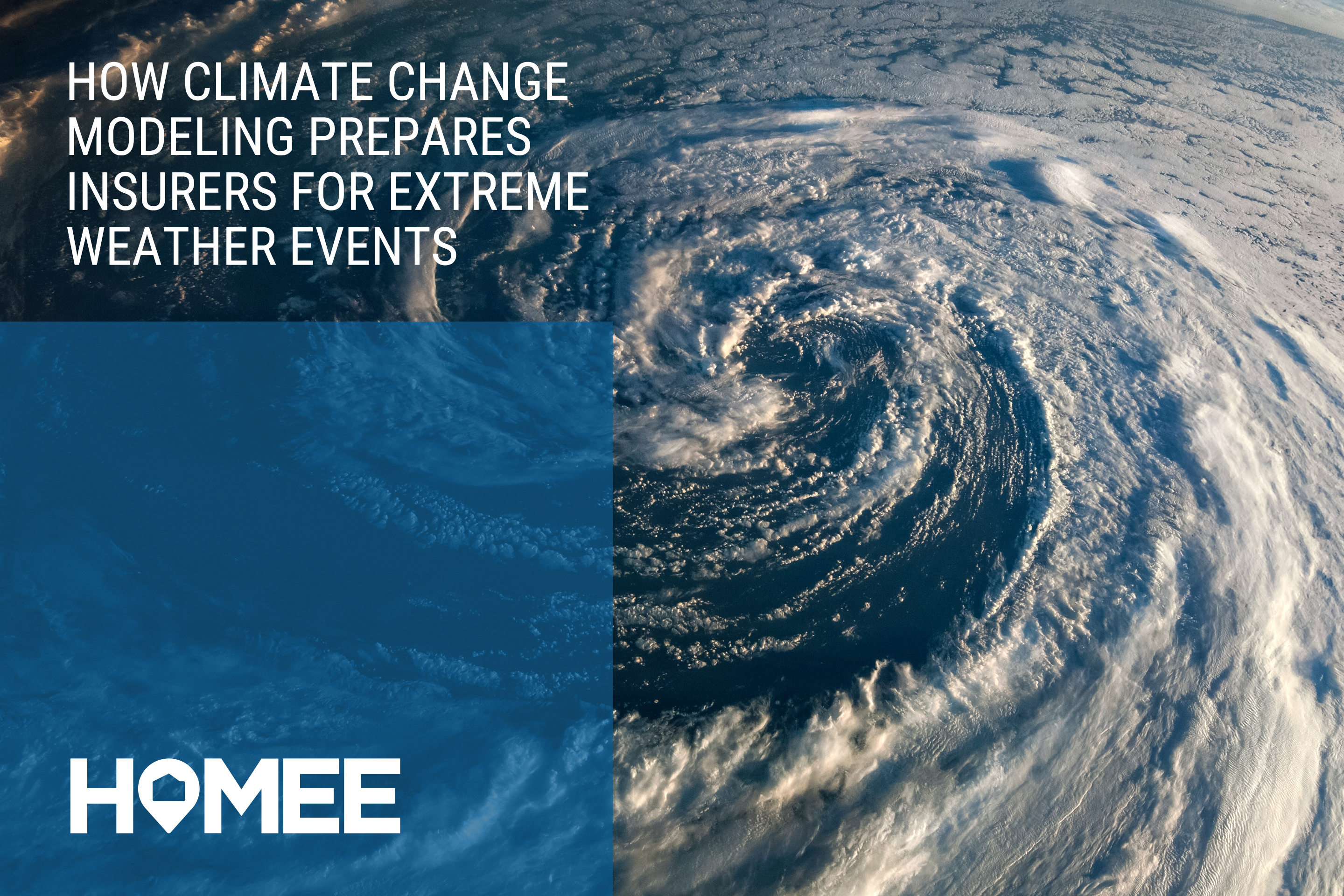How Climate Change Modeling Prepares Insurers for Extreme Weather Events

Extreme weather events are becoming more common and severe, as demonstrated by the recent wildfires in California and the floods in Texas. In this shifting climate, insurance carriers need to be proactive, not just responsive, when it comes to natural disasters.
Climate change modeling offers a critical advantage, helping insurers anticipate future risks, adjust underwriting strategies, and build long-term resilience. By engaging in proactive planning, carriers can identify these emerging risk patterns before they become significant losses.
At HOMEE, the only AI-driven direct repair program in the P&C industry, we’re leveraging AI-powered automation, a nationwide vetted contractor network, and integrated workflows to help carriers navigate climate-related challenges and remodel their claims processing.
Read on to learn more about why these disasters are occurring and how you can adapt.
Why Are Extreme Weather Events Happening More Frequently?
Natural disasters are increasing in frequency and intensity due to climate change and global warming. According to NOAA’s National Centers for Environmental Information (NCEI), in 2024, there were 27 individual weather and climate disasters that resulted in at least $1 billion in damages.
Rising surface temperatures cause:
- Droughts and heat waves
- More destructive storms and hurricanes
- Higher wind speeds
- Rising sea levels
What Does This Mean for Insurance Carriers?
Natural disasters and severe weather events have had a direct financial and operational impact on insurers. According to Insurance Journal, insured losses from natural disasters reached $140 billion in 2024.
This number has only increased. The World Economic Forum reports that, in the first half of 2025, the U.S. alone accounted for $126 billion of the total global economic losses from natural catastrophes, the most expensive first half for the U.S. on record.
What do these numbers mean? Climate change and its costs are not slowing down. If insurers want to stay competitive, they must remodel their claims processing.
What Is Climate Change Modeling?
Insurance models have been designed to respond to disasters, but these strategies alone will not suffice in today’s climate. It’s time for carriers to evolve their risk management models to include proactive methods, such as climate change modeling.
Climate change modeling involves evaluating potential climate risks, which gives insurance providers a better understanding of liabilities and high-impact areas.
For example:
- Flood Risk: Rising sea levels and changing rainfall patterns can shift floodplains. Climate models help insurers assess whether previously low-risk areas may now face elevated risk.
- Wildfire Risk: Warming temperatures and drier vegetation lead to more intense wildfire seasons. Modeling future vegetation and ignition trends can inform underwriting in high-risk zones.
- Hurricane Intensity: Warmer ocean temperatures may fuel stronger hurricanes. Models that simulate future storm patterns help insurers prepare for higher wind and storm surge losses.
Accurately understanding these risks enables more effective prevention and response strategies.
The Benefits of Climate Change Modeling
By integrating climate change modeling into their operations, insurers can:
- Improve risk selection and pricing: Models provide statistics that help insurers set premiums more accurately and identify high-risk areas.
- Enhance disaster preparedness: Understanding where and when extreme weather is most likely to strike allows insurers to offer tailored policies, enhance customer communication, and streamline post-disaster response.
- Support regulatory compliance: Governments and regulators are increasingly demanding climate-risk disclosures. Climate modeling provides the data needed for transparency and regulatory alignment.
- Accurate pricing and underwriting: Premiums can be adjusted to reflect an area’s risk level.
Upgrade Your Disaster Preparation & Response with HOMEE
With HOMEE’s tools and technology, you will not only be better equipped to respond to disasters, but you will also be better prepared for them.
Predictive Analytics Tools Powered by Real-Time Intelligence
Real-time intelligence, including automated scope recommendations from field data, aerial imagery, and inspection insights, provides carriers with the data to forecast future events or outcomes, such as the likelihood of a claim, future repair costs, or risk of damage.
Automation to Reduce Risk & Increase Profit
Automation streamlines repetitive and manual processes, lowering administrative costs and freeing up resources for more complex tasks.
HOMEE offers end-to-end automated dispatch, comms, and invoicing; claims distribution AI; and automated repair updates, seamlessly blending technology with live team support.
As a result, insurers can operate more efficiently, make faster decisions, and increase profitability while maintaining a strong focus on risk management and preserving human override.
Claims Management Solutions
Our rapid-response MRP platform and vetted contractor network provide carriers with surge capacity and scoped triage options for better claims management.
This fast, organized system helps insurance companies start and manage repairs right after something is damaged, connecting them with trusted, pre-approved contractors who can get the job done quickly and professionally.
Geo-Intelligence
HOMEE’s ProActive risk engagement technology uses geo-intelligence to alert insurance carriers when weather events like wind, hail, and floods impact high PIF areas. This enables pre-claim inspections, reducing fraud, facilitating accurate underwriting, and supporting faster triage.
Additionally, geo-aware vendor deployments and geofenced assignments that align with CAT impact zones improve response strategies. This way, when disaster strikes, HOMEE will quickly send the right people to the right place, making sure help and repair teams arrive where they're needed most right after the disaster happens.
Staying Competitive & Resilient
As climate risks increase, insurers can no longer afford to take a reactive stance. Climate change modeling offers a proactive approach—one that turns uncertainty into actionable insights.
To stay competitive and resilient, insurers must invest in science, partnerships, and digital infrastructure. Integrating climate projections into their core business models ensures carriers not only adapt but also lead the way to success in a rapidly warming world.
Ready to take the P&C industry by storm? Contact HOMEE to streamline your property claims processing and implement climate change modeling for faster, smarter, and policyholder-focused solutions.
